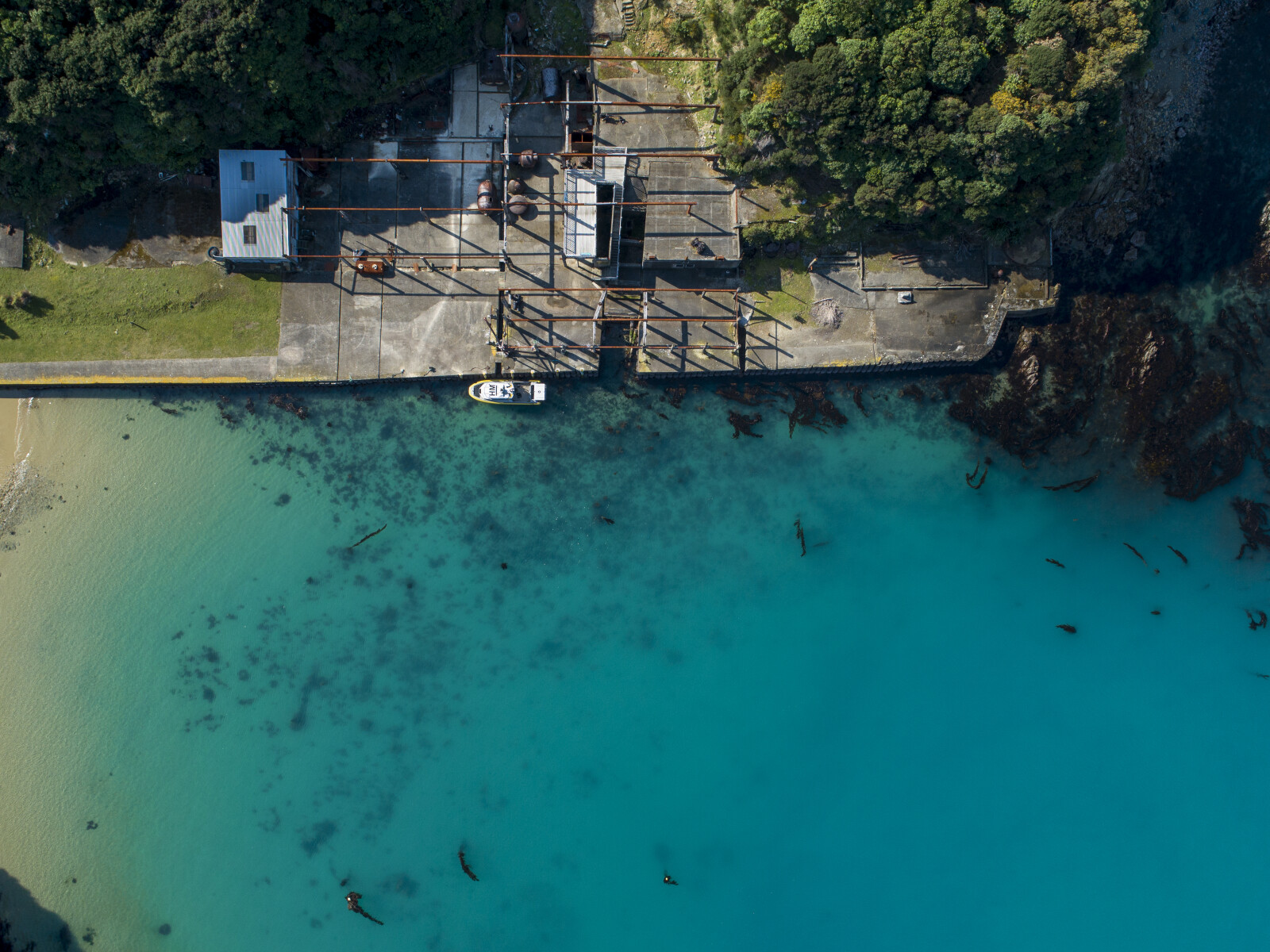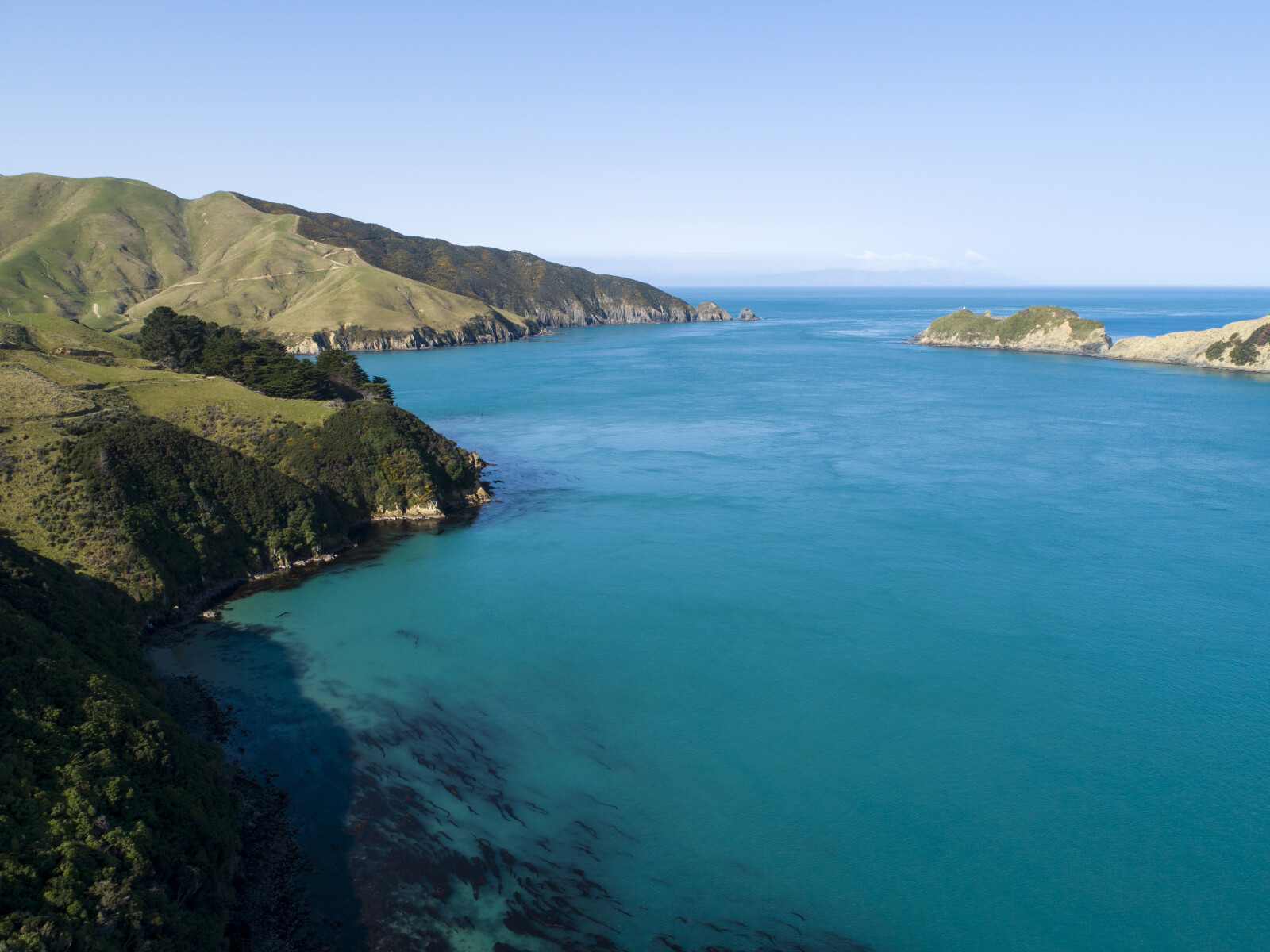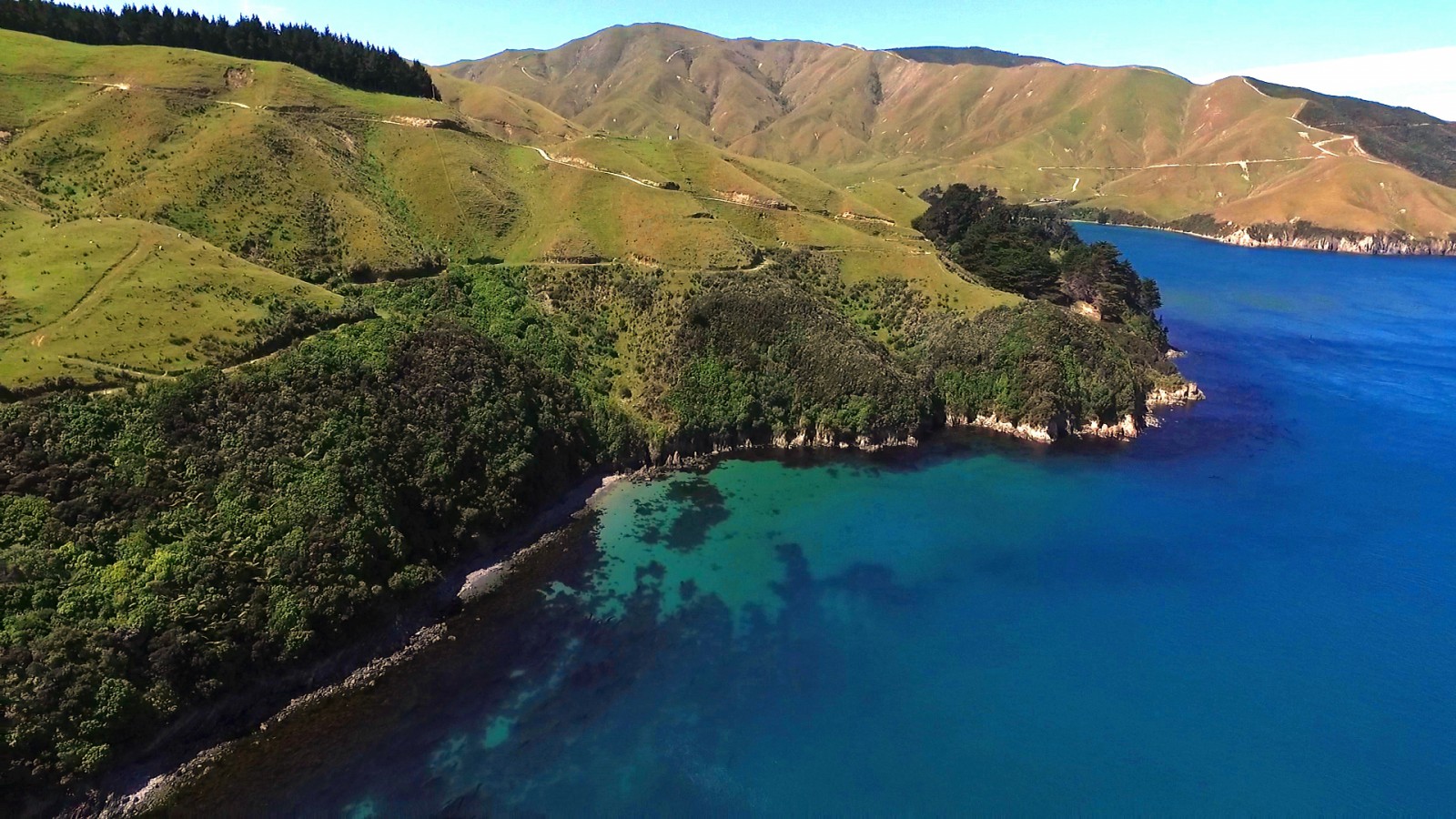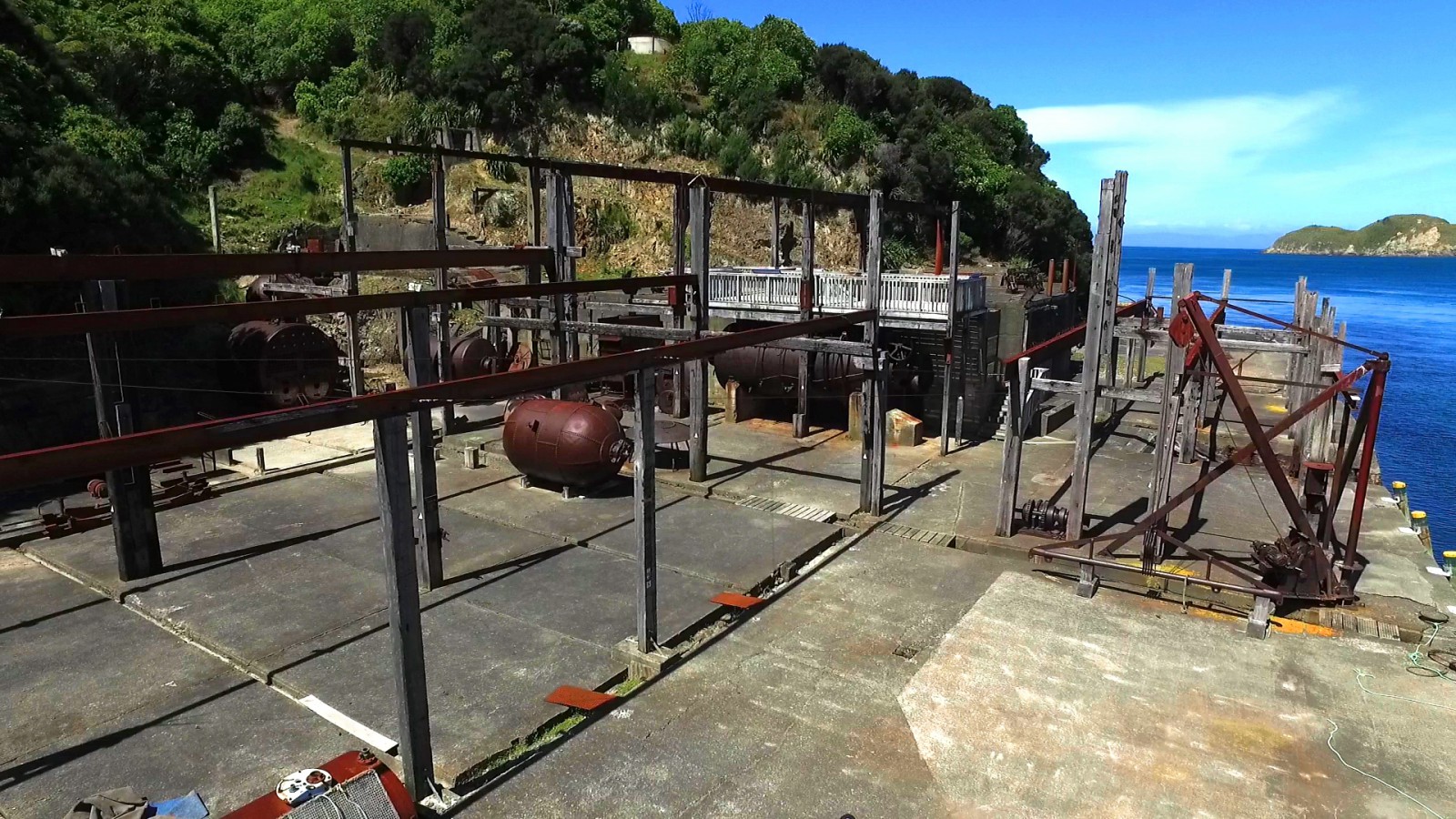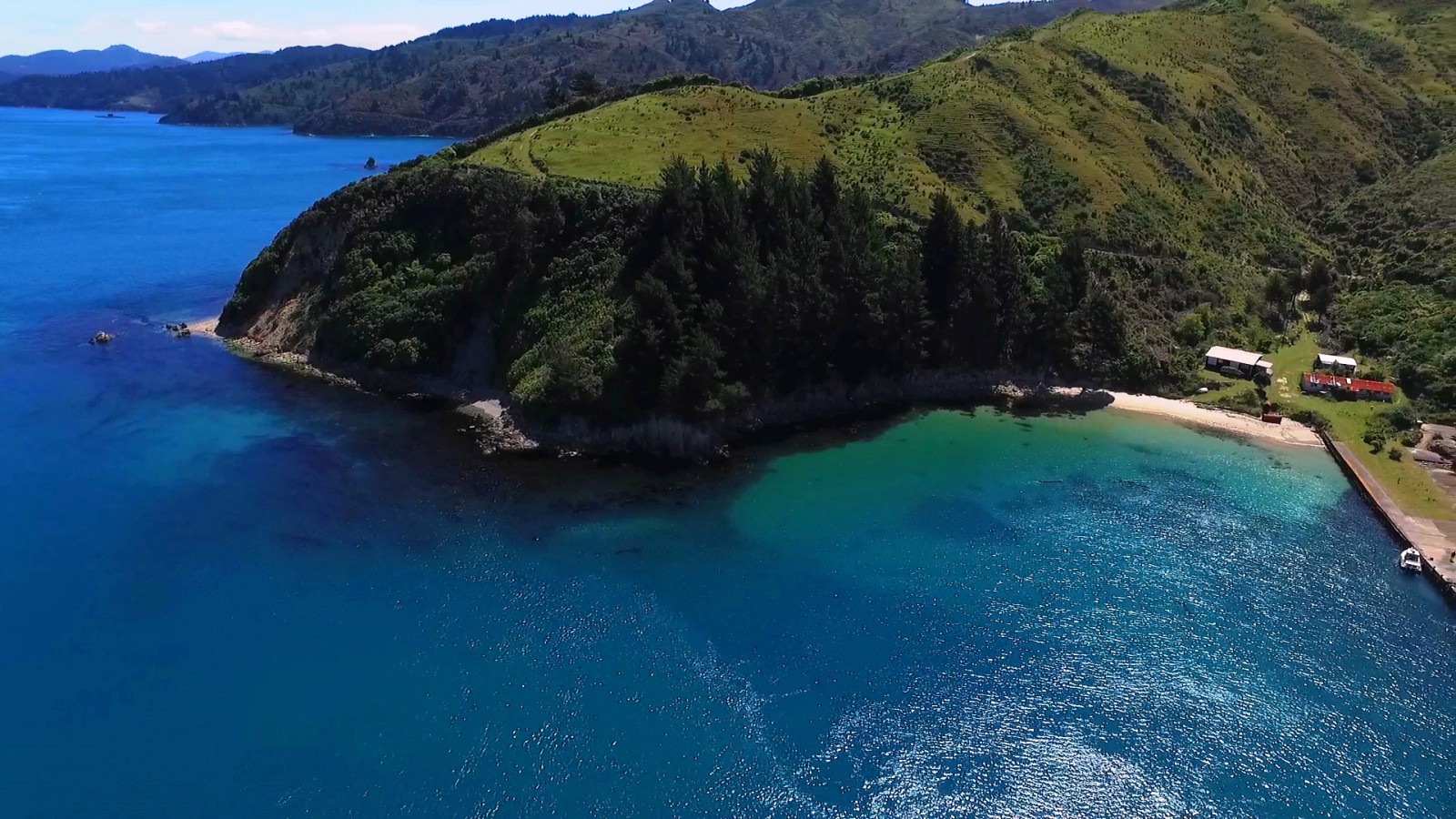This bay was the location for New Zealand’s final whaling station. Established in 1924 by the Perano family, the station was closed in 1964.
The station at Fishermans Bay was New Zealand's most modern industrialised whaling operation. The station was one of the first to use motor launches to hunt whales, and used a steam powered blubber digester to extract the oil from blubber. Today there is still evidence of a large wharf and the skeletal remains of the processing complex, complete with the slipway once used to haul up the whales for processing.1
The Perano family, originally emigrants from Genoa, Italy, arrived in Picton in the mid-1880s. They made a living from the sea, catching and exporting sardines to Australia. In 1904, Joe Perano, was fishing in Cook Strait outside Komaru headland. Suddenly pair of humpback whales rose up and almost knocked the oars from his boat. Legend has it that from this time onwards, Joe and his brother, Charlie, decided to hunt whales.
Joe designed and built a bomb-lance by placing gelignite in a 2.5cm diameter pipe. The pipe was darted into whale and then exploded using an electric detonator.
Initially establishing a station in Yellerton Bay in 1911, the Peranos killed and processed six humpback whales in their first season.
Within a year the Peranos realised towing whales deep into the Tory Channel was a costly exercise and had moved their operation to Tipi Bay, closer to the entrance of the Tory Channel. It was here the brothers bought a harpoon gun and expanded the station to include several buildings, none of which remain today.
The Peranos continued whaling during the 1920s but the brothers’ partnership dissolved. Charlie remained in Tipi Bay and Joe moved his station to Fishermans Bay. In 1928 Joe absorbed his brother’s station and relocated all operations to Fishermans Bay.
By the 1960s the operation was significant in size, employing approximately 45 people.2 The late 1950s were the station’s most successful, during this period approximately 200 whales per year were killed. The whales hunted during this time were predominantly humpback with the occasional sperm whale or blue whale.3
Following processing, whale meat was canned and sent to England as pet food, bones were ground down to make fertiliser, and oil was refined and exported for use in aircraft engines.4
By the 1960s public opinion and environmental concerns were making whaling less viable. Between 1911 and 1964, whalers based around the Tory Channel killed over 5000 humpbacks. In December 1964, a 13 metre long bull spermwhale, harpooned off Kaikoura was the last whale to be caught in New Zealand. This final catch saw the closure of the Perano whaling station in Fishermans Bay and abandonment of the surrounding factory and infrastructure.5
Shore-based whaling started and ended at virtually the same spot in the Tory Channel. Nearby Te Awaiti Bay saw the establishment of New Zealand’s first shore whaling station in 1827 and Fishermans Bay saw the industry’s closure, 135 years later.6
1. “Perano Whaling Station”, Ministry for Culture and Heritage, accessed, November 6, 2018, https://nzhistory.govt.nz/media/photo/perano-whaling-station .
2. Don Grady, The Perano Whalers of Cook Strait, 1911-1964 (Wellington: Reed, 1982) 22, 24, 27,29, 73, 78.
3. Nigel Prickett, “The Archaeology of New Zealand Shore Whaling”, (Wellington: Department of Conservation, 2002), accessed September 12, 2018, https://www.doc.govt.nz/our-work/heritage/heritage-publications/the-archaeology-of-new-zealand-shore-whaling/ .
4. Vivenne Jeffs, “Whale Hunting”, New Zealand Geographic, Issue 81, 2006, accessed September 12, 2018, https://www.nzgeo.com/stories/geonews-5/ .
5. Prickett, “New Zealand Shore Whaling”.
6. Grady, “The Perano Whalers”, pxi.

